1850 – First findings at the back of the eye
1850 – Ophthalmoscope
The physicist Hermann von Helmholtz (1821-1894) presents the ophthalmoscope in Königsberg. This device makes it possible for the first time to record findings at the back of the eye in living human beings. It leads to a dramatic increase in knowledge and thus decisively promotes specialisation and the development of ophthalmology into an independent discipline.
1851, November 1st – Eye Clinic of Albrecht von Graefe
Albrecht von Graefe (1828-1870) sets up his own private eye clinic in Berlin.
1852 – First Chair of Ophthalmology
The first chair of ophthalmology in the German Empire is established in Leipzig and filled by Theodor Ruete (1810-1867).
1854 – One of the world’s first ophthalmological journals, still in existence today
Albrecht von Graefe publishes the 1st volume of the “Archiv für Ophthalmologie” in Berlin. This is the first ophthalmological journal in the world that still exists today.
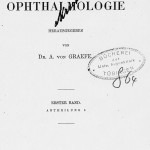 A. v. Graefe, Archiv für Ophthalmologie, 1. Band 1854
A. v. Graefe, Archiv für Ophthalmologie, 1. Band 1854
Mid of 1856 – “Jünger der Ophthalmologie”
In a letter to his pupil and friend Adolf Weber (1829-1915), Albrecht von Graefe wrote: “I was wondering whether it would not be possible for certain zealous disciples of ophthalmology to meet annually in a beautiful place, e.g. Heidelberg, and spend some time together, partly in scientific endeavours and communications, partly in harmless muse”.
 Adolf Weber
Adolf Weber
From the 3rd to the 5th of September 1857 – Founding date of the DOG
Albrecht von Graefe meets with 11 like-minded people, including his teacher Ferdinand Arlt (1812-1887), Adolf Weber, Friedrich Horner (1831-1886), Alexander Pagenstecher (1828-1879) and Carl Wilhelm von Zehender (1819-1916) in Heidelberg. The conference venue is the “Hotel Schrieder”. There will be 12 scientific lectures. The date of this meeting is designated as the founding date of the DOG after the 2nd World War.
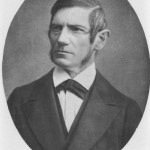 Ferdinand Arlt
Ferdinand Arlt
5th September 1863 – Founding date II
After some loose meetings in the past years, the “Ophthalmological Society” gives itself statutes consisting of 4 paragraphs drafted by Albrecht von Graefe. In contrast to the first 6 years, from now on there are official reports. Conference venues in Heidelberg will be the Hotel Schrieder, the Aula of the University and the Stadthalle. Until 1940, the year 1863 is considered – formally correct – as the founding date within the DOG.
1863 – Monthly bulletins for Ophthalmology
Carl Wilhelm von Zehender publishes the “Klinische Monatsblätter für Augenheilkunde” with Enke Verlag Stuttgart. The purpose of the “Monatsblätter” (monthly bulletins), which have been published without interruption until today, is the publication of the DOG conference reports. They are also intended to provide a more practice-oriented (clinical) counterweight to the more scientifically oriented “Archiv für Ophthalmologie”.
 Carl Wilhelm von Zehender
Carl Wilhelm von Zehender
1866 – Suspension of meetings during the war
The annual meetings of the DOG are suspended for the first time because of the German-Austrian War. There are repeated suspensions due to the war until 1947.
1867 – Manual of Physiological Optics
Hermann von Helmholtz, now in Heidelberg, publishes the “Handbuch der physiologischen Optik” (Manual of Physiological Optics), thus laying the foundations of the “physics of the eye”. In it he develops a theory of accommodation that is still largely valid today (Young-Helmholtz theory of accommodation).
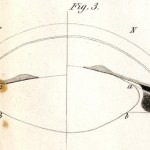 Helmholtz, Handbuch der physiologischen Optik
Helmholtz, Handbuch der physiologischen Optik
1868 – “Ophthalmology at Prussian universities…”
Julius Jacobson (1828-1889) publishes his pamphlet “Die Augenheilkunde an preußischen Universitäten – ein Nothstand im Cultus” (Ophthalmology at Prussian universities – a state of emergency in education), which he sends to the Prussian Minister of Education and the party leaders in the Prussian parliament. In it he writes, among other things:
“Should my description of the general problems in education not be clear and convincing enough to finally bring about radical changes, then I, for my part, will not tire of making the untenability of the present conditions visible to even the dumbest eye by going into detail”.
Thanks mainly to the activities of Jacobson, who was a student and friend of Albrecht von Graefe, ophthalmology became an independent subject with its own chairs at Prussian universities. With the founding of the German Empire in 1871, this development reached the entire German Empire, including the kingdoms of Bavaria, Württemberg and Saxony. By 1882, every medical faculty has a chair of ophthalmology. Julius Jacobson becomes the first full professor in Königsberg in 1873.
1869 – „Archives of Eye and Ear Diseases“
Hermann Knapp (1832-1911) publishes, together with S. Moos, the first volume of his “Archiv für Augen- und Ohrenkrankheiten” (Archives of Eye and Ear Diseases) and thus the third important German journal for ophthalmology. Knapp moves to the USA, where he founds the “Archives of Ophthalmology”, which still exists today, as a kind of continuation of the German archive. The “Archives of Ophthalmology”, as it is called from 1879, is continued by Carl Schweigger (1830-1905), Albrecht von Graefe’s successor in the Berlin chair, and by Carl von Hess (1863-1923) (hence “Archives of Ophthalmology Knapp-Schweigger-Hess). It was merged with “Graefe’s Archive for Ophthalmology” in 1938.
20th July 1870 – Albrecht von Graefe dies in Berlin
The founder of the DOG and doyen of modern ophthalmology, Albrecht von Graefe, dies of tuberculosis in Berlin one day after the outbreak of the Franco-Prussian War. The specialist journal he founded is called “Graefe’s Archive for Ophthalmology” in his honour from 1871.
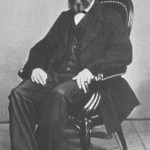 Albrecht von Graefe, eines der letzten Fotos
Albrecht von Graefe, eines der letzten Fotos
1872 – Donations for a von Graefe monument
Friends and students of Albrecht von Graefe call for donations for a von Graefe monument. Monetary donations come from all over the world in the following years.
1873 – “Graefe Prize”
Robert Ritter von Welz (1814-1878) from Würzburg donates the “Graefe Prize”, now awarded every two years, “in the faithful memory of his unforgotten friend and teacher”. The prize is awarded for the first time in 1877 to Theodor Leber.
1874 – Graefe Medal
The DOG decides to endow the Graefe Medal in memory of its founder Albrecht von Graefe. This highest scientific distinction of the DOG is to be awarded “every 10 years to the person who among contemporaries – without distinction of nationality – has rendered the greatest service to the advancement of ophthalmology”. Mainly due to a lack of funds, it will take another 12 years before the medal is awarded for the first time to Hermann von Helmholtz in 1886. Other laureates include Theodor Leber (1840-1917), Ewald Hering (1834-1918), Carl von Hess (1863-1923) and Jules Gonin (1870-1935).
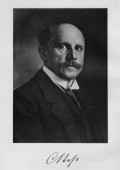 Carl von Hess
Carl von Hess
1875 – „Ophthalmological Society of Heidelberg“
The DOG is now called the “Ophthalmological Society of Heidelberg”.
From 1875
As a result of the ordinariates established, the first generation of university (but also non-university) eye clinics was built by 1910. The increasing importance of ophthalmology is also reflected in numerous new textbooks. One of the most modern of its time is the “Lehrbuch der Augenheilkunde in der Form klinischer Besprechungen” by Paul Römer (1873-1937), who writes in the 1st edition of 1910:
“The imperfection of our knowledge oppresses the researcher in me, the inadequacy of our therapeutic skill weighs heavily on the doctor’s soul, and only the joy of working with and serving a youth rich in future encourages the teacher in me to publish this book.”
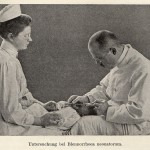 aus: Römer: „Lehrbuch der Augenheilkunde“, 2. Auflage von 1913
aus: Römer: „Lehrbuch der Augenheilkunde“, 2. Auflage von 1913
1877
Julius Hirschberg (1843-1925) publishes the 1st volume of his “Centralblatt für praktische Augenheilkunde” with Veit & Comp in Leipzig. Original papers are published in this journal, but mainly scientific papers from other journals are refereed. The aim is to make “filtered knowledge” accessible to the ophthalmological practitioner as quickly as possible. Hirschberg will edit the “Centralblatt” until 1918, i.e. for more than 40 years.
1881
For the first time a woman attends a DOG meeting.
22th May 1882
Exactly on Albrecht von Graefe’s 54th birthday, his monument is unveiled on the corner of Luisenstrasse and Schumannstrasse at the Charité in Berlin. The monument is thoroughly restored in 2005 with the support of the DOG.
9th to 12th August 1888
The 7th World Congress of Ophthalmology is held in Heidelberg. Congress President is Frans Cornelis Donders (1818-1889) from Utrecht/Netherlands, who first took part in a DOG meeting in 1858 and played a decisive role in determining the fate of the Society after the death of his close friend Albrecht von Graefes.
1896
The DOG conference reports are published in the new “Berichte der Ophthalmologischen Gesellschaft” (later “Fortschritte der Augenheilkunde”, today “Der Ophthalmologe”) and no longer in the “Klinische Monatsblättern”.
September 1903
The DOG is entered in the Heidelberg Register of Associations and thus only now acquires legal capacity. Theodor Leber becomes the first “legal” president (chairman of the board), August Wagenmann (1863-1955) becomes the first “legal” secretary.
1911
The DOG admits Dr Clara Knieper from Mittweida/Saxony as the first female member.
1911
Allvar Gullstrand (1862-1930) from Uppsala/Sweden is the only ophthalmologist to receive the Nobel Prize for Medicine for his work on the physiological optics of the eye (definition of the “normal eye”). Gullstrand, who also introduces the slit lamp in the same year, is a long-standing member of the DOG and from 1912 a member of the DOG board. He repeatedly attends the conferences in Heidelberg. In 1928 he is awarded the Graefe Medal by the DOG.
August 1914
World War I begins. This leads to the suspension of the meetings of 1914, 1915 and 1917 and to the breaking off of ophthalmological relations with the war opponents. Contacts with neutral states are maintained. About 20 DOG members are killed in the war.
November 1918
The end of the Empire marks the beginning of the Weimar Republic. The leadership of the DOG and the full members remain in office and – as far as can be reconstructed today – tend to be loyal to the Kaiser. Wilhelm Uhthoff (1853-1927) is the DOG’s president during the transitional period.
1918
With “The Reform of Ophthalmology”, Julius Hirschberg completes the last volume of his “History of Ophthalmology”, which appears in the 2nd edition of the “Handbuch der gesamten Augenheilkunde” by Alfred Graefe (1830-1899), the cousin of Albrecht von Graefe, and Theodor Saemisch (1833-1909). Thanks to this epoch-making work of several thousand pages, which began in 1899 with “The Ophthalmology of the Ancient Egyptians”, no other medical discipline has such detailed information on its own history as ophthalmology. Today, a commemorative plaque commemorates his private eye clinic at what is now Reinhardtstrasse 34, not far from the Reichstag building in Berlin.
6th August 1920
At the request of Emil Krückmann (1865-1944), the General Assembly at the 42nd meeting in Heidelberg unanimously decides to rename the “Heidelberg Ophthalmological Society” the “Deutsche Ophthalmologische Gesellschaft (German Society of Ophthalmology – DOG). The name has endured to this day. The inclusion of the word “German” certainly stems to a large extent from the fact that the international boycott measures against the new Weimar Republic encouraged nationalist tendencies within ophthalmology as well.
8th to 10th June 1922
For the first time in its history, the DOG holds its 43rd congress not in Heidelberg, but in Jena.
1926
After the first, difficult years of the Weimar Republic, Theodor Axenfeld (1867-1930) wrote the timelessly topical sentence on the occasion of his anniversary “25 years as editor of the Klinische Monatsblätter für Augenheilkunde”:
“Only those who remain in continuous contact with the intellectual work of their subject … will deepen their clinical judgement and preserve in full measure the drive for further education and the joy of progress, and thus have the indispensable counterbalance against the purely technical attitude and the absorption by the economic hardship of the day, which just today threatens to consume thought to an excessive degree.”
30th January of 1933 to 8th May 1945
Adolf Hitler’s “seizure of power” causes a rupture in German ophthalmology. Leading positions, including in ophthalmology, are largely filled “according to the party book”, especially until 1938, and laws such as the “Law for the Prevention of Hereditary Diseases in the Offspring” of 14.07.1933 influence practical ophthalmology in an unprecedented way. Of the 193 (as of 2014) Jewish ophthalmologists living in Germany in 1933 – almost 40% of whom are DOG members – about 65% emigrate by 1941, and 14% die in a concentration camp or prison by the end of the war. One of the emigrants is Aurel von Szily (1880-1945), who returns to his home town of Budapest in 1939 after being expelled from his chair in Münster in 1935 and forcibly deprived of the editorship of the “Klinische Monatsblätter für Augenheilkunde” in 1937.
Until 1940, the reports of the DOG state that about 80% of the Jewish members “left voluntarily”. At least in the first years, the DOG leadership met the new, totalitarian rulers predominantly with sympathy. According to current research, however, the DOG was not involved in Nazi crimes. In particular, the secretary of the DOG from 1938 and Heidelberg professor Ernst Engelking (1886-1975) is considered critical of the regime. The DOG chairman Walther Löhlein (1882-1954) becomes Adolf Hitler’s ophthalmologist in his capacity as chair in Berlin.
6th to 8th August 1935
The DOG celebrates its 50th conference in Heidelberg. After the imposed change of the statutes, it comes under the influence of the Reich Ministry of the Interior.
4th to 8th July 1937
The 52nd meeting of the DOG takes place in Heidelberg. The discussions on the “Law for the Prevention of Hereditary Diseases”, i.e. the indications for (forced) sterilisation, are surprisingly controversial, with non-NSDAP members among the ophthalmologists sometimes taking a stricter stance than NSDAP members. Ernst Rahlson (1871-1944) is the only and last Jewish ophthalmologist to attend a DOG conference during the National Socialist era.
05th to 07th August 1940
The 53rd meeting of the DOG takes place in Dresden at the Hygiene Museum. Because of the Second World War, it is the last during the National Socialist era.
23rd to 25th August 1948
The 54th meeting of the DOG is the first after the Second World War. It takes place again in Heidelberg. The DOG reconstitutes itself under the supervision of the allied military authorities on 24 August with its old statutes of 15 September 1903.
18th to 20th September 1950
The 56th meeting of the DOG takes place in Munich. A memorial service for Hermann von Helmholtz commemorates “100 years of the ophthalmoscope”. The number of DOG members exceeds 1000 in 1949/50.
1957
The DOG celebrates its 100th anniversary. The Düsseldorf ophthalmologist and medical historian Albert Esser writes a commemorative publication, which, however, almost completely omits the Nazi period. The reappraisal of the DOG’s Nazi history does not begin until 1999.
 Festschrift 1957
Festschrift 1957
13th August 1961
The construction of the Berlin Wall finally leads to a far-reaching interruption of the contacts between ophthalmologists from the GDR and those from the FRG, which had already been declining since 1949. East German ophthalmologists are urged to terminate their DOG membership.
1966
The 20th World Congress of Ophthalmology is held in Munich. Congress President is Hans (Johannes) Karl Müller (1899-1977) from Bonn.
 Hans Karl Müller
Hans Karl Müller
1975
The 74th Congress of the DOG is held in Essen with the theme “Peripheral Retina”. The congress president, Gerhard Meyer-Schwickerath (1920-1992), is the only German ophthalmologist so far to be awarded a Nobel Prize for the photocoagulation of the retina, which he developed in Hamburg and Essen.
 Gerhard Meyer-Schwickerath
Gerhard Meyer-Schwickerath
1990
The 88th meeting of the DOG takes place in Baden-Baden with the main theme “Retina”. After the fall of the Berlin Wall, for the first time in decades, numerous colleagues from East Germany take part in the conference. Congress President is Achim Wessing.
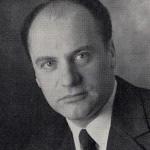 Achim Wessing
Achim Wessing
1991
The 89th DOG Congress is held in Leipzig and thus for the first time in one of the new federal states. Congress President is Jörg Draeger.
Nach 1991
After the fall of communism, also in the former “Eastern Bloc”, the ophthalmologist Rolf Grewe from Münster and the DOG establish contacts with ophthalmologists in the countries of South-Eastern Europe and support the further development of ophthalmology there.
1992
Due to reunification, the number of DOG members and congress participants has increased considerably, so that the “historic Heidelberg” has become too small a venue and can no longer be considered. The DOG meets in nearby Mannheim from 1992-1996.
1993
The number of DOG members exceeds 3000.
1997
The DOG moves its venue to Berlin. President of the first conference in Berlin is Anselm Kampik.
2000
The 98th DOG Congress in Berlin is a “millennium conference” with the theme “Tradition and new beginnings in ophthalmology at the turn of the millennium”. Congress President is Christian Ohrloff.
 Christian Ohrloff
Christian Ohrloff
30th September 2001
Gabriele Lang is the first woman to become President of the DOG.
2002
The DOG makes its “Graefe Collection” available to the Medical History Museum at the Charité Berlin on permanent loan.
26 to 29 September 2002
With its President Gabriele Lang, the DOG celebrates its 100th conference in Berlin with the general theme “Innovations in Ophthalmology”.
2005
The DOG co-hosts the meeting of the European Ophthalmological Association (SOE) in Berlin. The conference president is Michael Foerster.
 Michael Foerster
Michael Foerster
2006
The DOG moves into its new office in Munich’s Platenstraße.
2007
With its 105th conference, the DOG celebrates its 150th birthday. It publishes the comprehensive commemorative publication “Visus und Visionen”. The conference president is Gernot Duncker.
 Gernot Duncker
Gernot Duncker
2010
The DOG is co-organiser of the “World Ophthalmology Congress” (WOC) in Berlin. The conference president is Gerhard Lang.
 Gerhard K. Lang
Gerhard K. Lang
2013
The “Klinische Monatsblätter für Augenheilkunde” as one of 3 publication organs of the DOG celebrate their 150th birthday. In the special section “150 years of KliMo – yesterday and today”, papers from past decades are reproduced and commented on from today’s perspective.
2014
After 16 years, Anselm Kampik (Munich) ended his term as Secretary General of the DOG. Kampik’s decisive achievements are and remain the professionalisation of the office, the further internationalisation of the society and the relocation of the conference venue to Berlin. Kampik’s successor as Secretary General is Thomas Reinhard (Freiburg).
2015
A secondary school in Berlin-Kreuzberg officially receives the name “Albrecht von Graefe Schule”. The naming ceremony is celebrated with a ceremony. Subsequently, a friendly relationship develops between the Graefe School and the DOG.
2020
This year marks the 150th anniversary of Albrecht von Graefe’s death (“Graefe Year”) and the beginning of the Corona pandemic. On 20 July, the anniversary of von Graefe’s death, President Hans Hoerauf and Vice-President Hagen Thieme lay a wreath on behalf of the DOG at the von Graefe Memorial in Berlin. Mr Opp, teacher at the A.v. Graefe School, is also present. Due to the pandemic, the congress in October cannot be held as an attendance event, but is held virtually for the first time. The keynote speeches and lectures will deal with the influence of economics on medicine and ophthalmology.
With over 7,850 members from 6 continents and 60 countries, the DOG is – as has been its tradition since the beginning – an international association of ophthalmologists. With an age of 163 years, it is the oldest specialist medical society in Germany and the oldest ophthalmological society on earth.
 © Dirk Michael Deckbar
© Dirk Michael Deckbar
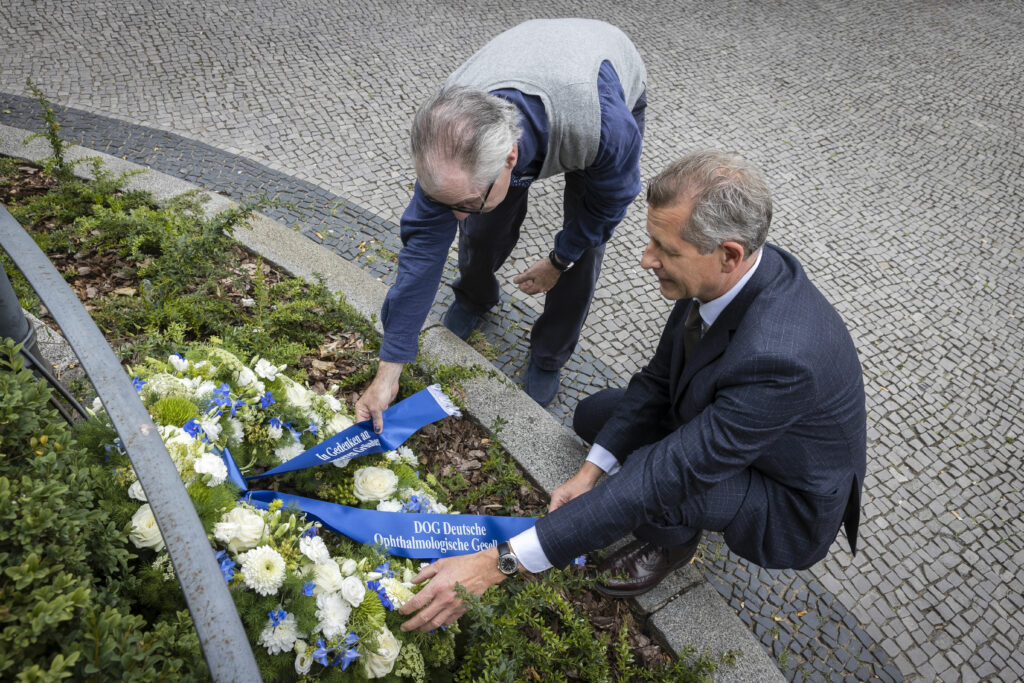 Kranzniederlegung am Albrecht Von Graefe Denkmal – 20. Juli 2020 durch die DOG und anschliessende Verleihung der Ehrenmitgliedschaft an Prof. Rohrbach Und Prof. Klauß l © Dirk Michael Deckbar
Kranzniederlegung am Albrecht Von Graefe Denkmal – 20. Juli 2020 durch die DOG und anschliessende Verleihung der Ehrenmitgliedschaft an Prof. Rohrbach Und Prof. Klauß l © Dirk Michael Deckbar